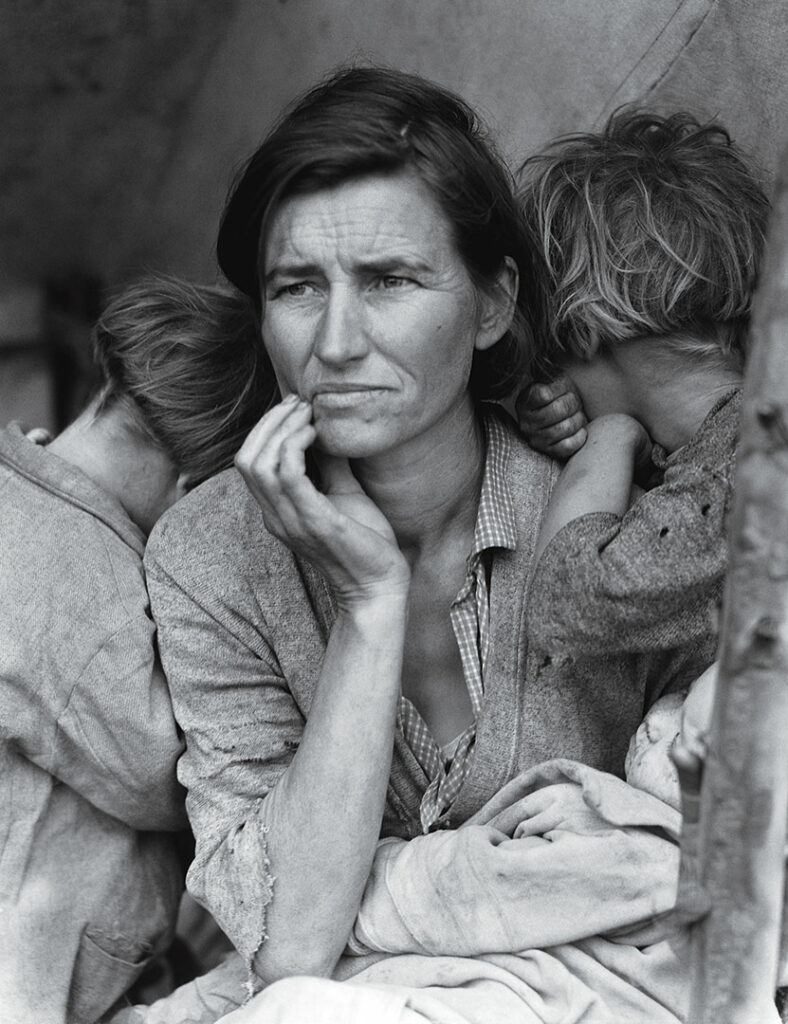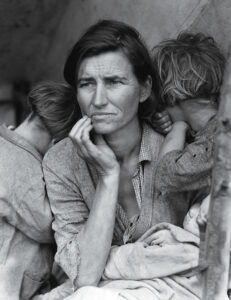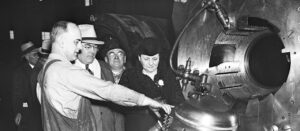“A Dust Bowl of Dog Soup: Picturing the Great Depression” Virtual Exhibition.
Smith College Museum of Art presents prints, drawings, and photos created by the New Deal Works Progress Administration (WPA) and Farm Security Administration (FSA), art ‘of the people and for the people.
Virtual Exhibition can be seen at this YouTube channel
From TIME 100 Photos Collection:
The picture that did more than any other to humanize the cost of the Great Depression almost didn’t happen. Driving past the crude “Pea-Pickers Camp” sign in Nipomo, north of Los Angeles, Dorothea Lange kept going for 20 miles. But something nagged at the photographer from the government’s Resettlement Administration, and she finally turned around. At the camp, the Hoboken, N.J.–born Lange spotted Frances Owens Thompson and knew she was in the right place. “I saw and approached the hungry and desperate mother in the sparse lean-to tent, as if drawn by a magnet,” Lange later wrote. The farm’s crop had frozen, and there was no work for the homeless pickers, so the 32-year-old Thompson sold the tires from her car to buy food, which was supplemented with birds killed by the children. Lange, who believed that one could understand others through close study, tightly framed the children and the mother, whose eyes, worn from worry and resignation, look past the camera. Lange took six photos with her 4×5 Graflex camera, later writing, “I knew I had recorded the essence of my assignment.” Afterward Lange informed the authorities of the plight of those at the encampment, and they sent 20,000 pounds of food. Of the 160,000 images taken by Lange and other photographers for the Resettlement Administration, Migrant Mother has become the most iconic picture of the Depression. Through an intimate portrait of the toll being exacted across the land, Lange gave a face to a suffering nation.




